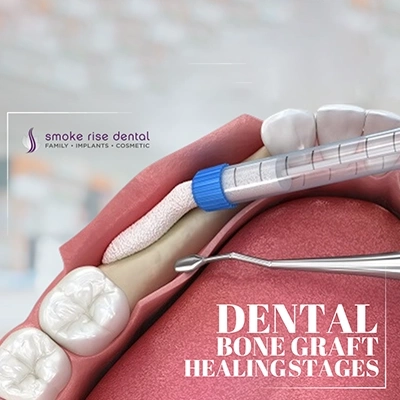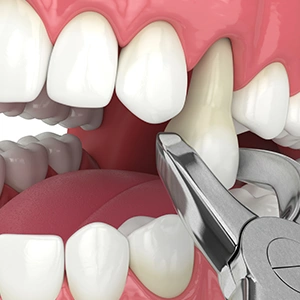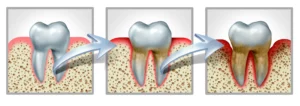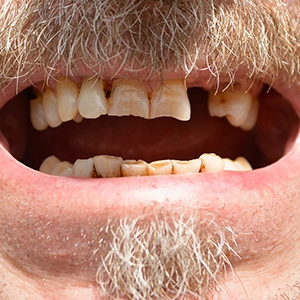If you are missing one or more natural teeth, dental implants are the ideal solution for restoring both appearance and functionality. However, it’s important to note that dental implants require adequate bone density for the best chances of success.
The dental experts at Smoke Rise Dental can evaluate your current condition and determine if you qualify for dental implants or if you need additional procedures.
Sometimes, ensuring a strong foundation for dental implants requires a dental bone graft. This is a procedure that involves augmenting the jawbone’s density. This ensures the success of the implant and improves overall oral health.
In this article, we’ll explore the bone grafting procedure and the healing stages. This knowledge is important for patients who are considering undergoing this procedure.
Common Reasons You Might Need a Dental Bone Graft
A dental bone graft is primarily associated with insufficient jawbone density. There are several reasons you may need a dental bone graft, including:
Tooth Extractions
After tooth extraction, especially if it's a molar or if the extraction was due to advanced decay or gum disease, the jawbone at the extraction site may experience resorption. A bone graft can help preserve or restore the bone for future dental procedures.
Periodontal Disease
Severe gum disease can lead to the deterioration of the supporting bone structure. A bone graft may be recommended to rebuild the lost bone and provide stability to the teeth.
Trauma or Injury
Accidents or facial trauma can result in fractures or damage to the jawbone. A bone graft may be necessary to repair and regenerate the damaged bone tissue.
Congenital Defects
Some individuals may have congenital conditions or developmental issues that result in insufficient bone in the jaw. A bone graft can help address these structural deficiencies.
Tooth Loss and Atrophy
When a tooth is lost and not promptly replaced, the surrounding bone can atrophy over time due to lack of stimulation from chewing forces. A bone graft may be necessary before placing dental implants to ensure a stable foundation.
Advanced Gum Recession
Severe gum recession can expose the roots of the teeth and lead to bone loss. Bone grafting may be recommended to enhance the support for the remaining teeth and prevent further complications.
Preparation for Dental Implants
Dental implants require a stable foundation for successful integration. If the jawbone lacks the necessary density or volume, a bone graft may be performed before implant placement to ensure a secure and long-lasting result.
Enhancing Aesthetics
In some cases, a bone graft may be performed for cosmetic reasons. It can help improve the contours of the jawline and provide a more aesthetically pleasing appearance.
Resolving Jaw Joint Issues
Certain jaw joint conditions, such as temporomandibular joint disorders (TMJ), may benefit from bone grafting to address structural irregularities or improve joint function.
How Does a Dental Bone Graft Work?
Bone grafting is a meticulous process that involves augmenting the jawbone to provide adequate support for dental implants. This procedure typically comprises several key steps:
Consultation and Evaluation
Before the bone graft, a thorough examination of the patient's oral health is conducted. This includes assessing bone density and identifying potential donor sites for graft material.
Graft Material Selection
Graft material can be sourced from the patient's own body, a donor, or synthetic materials. The choice depends on factors like the extent of bone loss and the patient's overall health.
Bone Grafting Surgery
During the surgery, the selected graft material is placed in the targeted areas of the jawbone. The surgeon secures the graft, and the incision is closed.
Healing and Integration
Over the next few months, the graft material integrates with the existing bone, promoting the regeneration of new, strong bone tissue.
Bone Graft Healing Stages
If bone graft surgery is recommended, it’s important to have an understanding of the various healing stages. This will help you manage your expectations as well as ensure optimal outcomes. Bone graft healing stages include:
Initial Healing
The initial healing usually lasts for about 1 to 2 weeks. During this time, a blood clot will form around the surgical site, reducing the risk of infection. Patients are typically advised to stick with soft foods during this time and avoid strenuous physical activity.
Early Bone Formation
This stage usually lasts an average of 2 to 8 weeks. During this time, cellular activity will increase, which leads to the formation of granulation tissue. Blood vessels will begin to infiltrate the graft and early bone formation will become visible on x-rays.
Consolidation
This stage usually lasts an average of 2 to 4 months. During this time, the graft will undergo significant changes and begin to integrate with the natural bone. Patients can gradually resume their normal hygiene practices.
Maturation
The final stage of bone graft healing is maturation. This stage usually lasts an average of 4 to 6 months. During this time, the bone graft will continue to strengthen. By this time, the jawbone will be able to support a dental implant.
How Long Does It Take for Bone Graft to Heal?
The duration for a dental bone graft to heal can vary based on several factors, including the type of graft, the size of the grafting site, the patient's overall health, and the specific objectives of the graft. Generally, the healing process occurs in stages, and a full recovery may take several months.
It's essential to note that individual variations exist, and some patients may experience a faster or slower healing process. Factors such as the patient's overall health, compliance with postoperative care instructions, and the type of graft material used all contribute to the overall healing time.
Regular follow-up appointments with the dental surgeon are crucial during the healing process. These appointments allow the dentist to monitor progress, address any concerns, and provide guidance on when it is safe to proceed with additional dental procedures, such as implant placement.
If you are considering or have undergone a dental bone graft, it's essential to consult with your dental professional to get personalized information about your specific case and to ensure the best possible outcome for your oral health.
Schedule Your Consultation at Smoke Rise Dental Today
Dental bone grafts are often recommended for patients who are interested in dental implants to replace missing teeth but have jawbone loss. However, there are a few other reasons you may want to consider this procedure.
It is important to understand this is not a quick and easy procedure. Healing can take up to 6 months or more, depending on your body’s response to the graft and ability to heal. If you have jawbone loss for any reason, consider scheduling your consultation at Smoke Rise Dental today.













